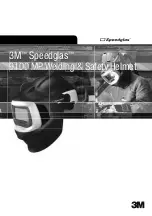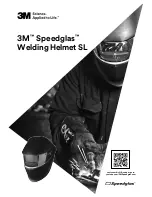
GE, GX Series
Backhoe
Operation
29
7. Operation
7.1 Jobsite Safety
•
For safety of others during operation, set up a
Work Zone
around the machine. Mark the area with safety cones. See
•
Plan your excavation ahead of time. Determine where
excavated soil will be dumped. Position the machine to
minimize swinging distance between digging and dumping.
The shorter the travel distance, the faster the dig / dump
cycle and more work that can be done.
•
Be aware of buried or overhead wires, cables, pipes or
other obstructions. Contact your local utility company to
mark their location.
•
If working in a close or cramped space, be sure there is
sufficient room for the machine to dig, swing, and dump.
Modify the work site to provide more area. Unplanned
contact with adjacent buildings, equipment or terrain can
cause loss of control leading to injury or damage.
•
Be aware of prevailing winds. Set-up the work site so
prevailing winds blow exhaust, dust, and debris away from
the operator. As a result, the work zone becomes safer as
vision is not be obscured while digging and dumping.
•
Do not operate inside a building. Gas and diesel engines
produce carbon monoxide that can cause asphyxiation.
•
Be aware of bystanders. Do not position the backhoe where
there could be bystanders, on-lookers or unauthorized
personnel. Stop the machine if anyone enters the working
area. There is always the risk of someone getting in the
way or getting pinched / caught by components. Do not
resume work until the work zone is clear.
•
Keep the tractor wheels in contact with the ground to
provide the widest stabilizer stance and the lowest center
of gravity.
7.2 Before Startup
Each operator must be trained in the proper operating
procedures prior to operating the machine.
•
Review location of the controls, their function, and
movement direction when activated.
•
Follow the Pre-Operation Checklist.
•
Set up the machine correctly. See
7.2.1 Pre-operation Checklist
Before operating the machine, check the following:
Pre-operation Checklist
Check that the backhoe is properly attached to
the power unit. Be sure retainers are used on the
mounting pins and mounting hardware is tightened
to their specifi ed torque.
Check that hoses and pivot points are free of any
debris or entangled material.
Check the machine has been lubricated following
the schedule outlined in the Maintenance section.
Check that all boom assembly pivot points move
freely.
Check that stabilizers move freely.
Check that hydraulic hoses are not rubbing
anywhere, pinched or crimped.
Check for hydraulic leaks. Tighten connections or
replace components to stop leaks.
Check and ensure that all covers, guards and
shields are in place, secured, and can function as
designed.
Check and tighten all fasteners. Make sure the
equipment is in good condition.
Check that appropriate equipment for personal
protection is available and being used.
Check that jewelry, loose-fi tting clothing are not
worn. Make sure long hair is tied back.
















































